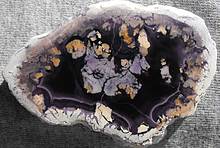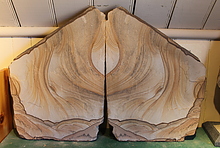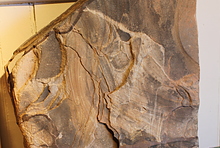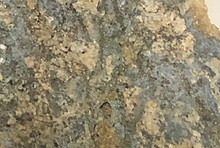Learning CenterWhat is a mineral?The most common minerals on earthInformation for EducatorsMindat ArticlesThe ElementsThe Rock H. Currier Digital LibraryGeologic Time
搜索矿物的性质搜索矿物的化学Advanced Locality Search随意显示任何一 种矿物Random Locality使用minID搜索邻近产地Search Articles搜索词汇表更多搜索选项
╳Discussions
💬 Home🔎 Search📅 LatestGroups
EducationOpen discussion area.Fakes & FraudsOpen discussion area.Field CollectingOpen discussion area.FossilsOpen discussion area.Gems and GemologyOpen discussion area.GeneralOpen discussion area.How to ContributeOpen discussion area.Identity HelpOpen discussion area.Improving Mindat.orgOpen discussion area.LocalitiesOpen discussion area.Lost and Stolen SpecimensOpen discussion area.MarketplaceOpen discussion area.MeteoritesOpen discussion area.Mindat ProductsOpen discussion area.Mineral ExchangesOpen discussion area.Mineral PhotographyOpen discussion area.Mineral ShowsOpen discussion area.Mineralogical ClassificationOpen discussion area.Mineralogy CourseOpen discussion area.MineralsOpen discussion area.Minerals and MuseumsOpen discussion area.PhotosOpen discussion area.Techniques for CollectorsOpen discussion area.The Rock H. Currier Digital LibraryOpen discussion area.UV MineralsOpen discussion area.Recent Images in Discussions
Mineralogical ClassificationCation substitution in synthetic meridianiite (MgSO4.11H2O)
30th May 2012 17:37 UTCUwe Kolitsch Manager
Fortes, A. D., Browning, F., Wood, I. G. (2012): Cation substitution in synthetic meridianiite (MgSO4•11H2O) I: X-ray powder diffraction analysis of quenched polycrystalline aggregates. Physics and Chemistry of Minerals 39, 419-441.
Meridianiite, MgSO4•11H2O, is the most highly hydrated phase in the binary MgSO4–H2O system. Lower hydrates in the MgSO4–H2O system have end-member analogues containing alternative divalent metal cations (Ni2+, Zn2+, Mn2+, Cu2+, Fe2+, and Co2+) and exhibit extensive solid solution with MgSO4 and with one another, but no other undecahydrate is known. We have prepared aqueous MgSO4 solutions doped with these other cations in proportions up to and including the pure end-members. These liquids have been solidified into fine-grained polycrystalline blocks of metal sulfate hydrate + ice by rapid quenching in liquid nitrogen. The solid products have been characterised by X-ray powder diffraction, and the onset of partial melting has been quantified using a thermal probe. We have established that of the seven end-member metal sulfates studied, only MgSO4 forms an undecahydrate; ZnSO4 forms an orthorhombic heptahydrate (synthetic goslarite), MnSO4, FeSO4, and CoSO4 form monoclinic heptahydrates (syn. mallardite, melanterite, bieberite, respectively), and CuSO4 crystallises as the well-known triclinic pentahydrate (syn. chalcanthite). NiSO4 forms a new hydrate which has been indexed with a triclinic unit cell of dimensions a = 6.1275(1) Å, b = 6.8628(1) Å, c = 12.6318(2) Å, α = 92.904(2)°, β = 97.678(2)°, and γ = 96.618(2)°. The unit-cell volume of this crystal, V = 521.74(1) Å3, is consistent with it being an octahydrate, NiSO4•8H2O. Further analysis of doped specimens has shown that synthetic meridianiite is able to accommodate significant quantities of foreign cations in its structure; of the order 50 mol. % Co2+ or Mn2+, 20–30 mol. % Ni2+ or Zn2+, but less than 10 mol. % of Cu2+ or Fe2+. In three of the systems we examined, an ‘intermediate’ phase occurred that differed in hydration state both from the Mg-bearing meridianiite end-member and the pure dopant end-member hydrate. In the case of CuSO4, we observed a melanterite-structured heptahydrate at Cu/(Cu + Mg) = 0.5, which we identify as synthetic alpersite <(Mg0.5Cu0.5)SO4•7H2O)>. In the NiSO4- and ZnSO4-doped systems we characterised an entirely new hydrate which could also be identified to a lesser degree in the CuSO4- and the FeSO4-doped systems. The Ni-doped substance has been indexed with a monoclinic unit-cell of dimensions a = 6.7488(2) Å, b = 11.9613(4) Å, c = 14.6321(5) Å, and β = 95.047(3)°, systematic absences being indicative of space-group P21/c with Z = 4. The unit-cell volume, V = 1,176.59(5) Å3, is consistent with it being an enneahydrate . Similarly, the new Zn-bearing enneahydrate has refined unit cell dimensions of a = 6.7555(3) Å, b = 11.9834(5) Å, c = 14.6666(8) Å, β = 95.020(4)°, V = 1,182.77(7) Å3, and the new Fe-bearing enneahydrate has refined unit cell dimensions of a = 6.7726(3) Å, b = 12.0077(3) Å, c = 14.6920(5) Å, β = 95.037(3)°, and V = 1,190.20(6) Å3. The observation that synthetic meridianiite can form in the presence of, and accommodate significant quantities of other ions increases the likelihood that this mineral will occur naturally on Mars—and elsewhere in the outer solar system—in metalliferous brines.
Fortes, A. D., Browning, F., Wood, I. G. (2012): Cation substitution in synthetic meridianiite (MgSO4•11H2O) II: variation in unit-cell parameters determined from X-ray powder diffraction data. Physics and Chemistry of Minerals 39, 443-454.
We have prepared aqueous MgSO4 solutions doped with various divalent metal cations (Ni2+, Zn2+, Mn2+, Cu2+, Fe2+, and Co2+) in proportions up to and including the pure end-members. These liquids have been solidified into fine-grained polycrystalline blocks of metal sulfate hydrate + ice by rapid quenching in liquid nitrogen. In a companion paper (Fortes et al., in Phys Chem Min 39) we reported the identification of various phases using X-ray powder diffraction, including meridianiite-structured undecahydrates, melanterite- and epsomite-structured heptahydrates, novel enneahydrates and a new octahydrate. In this work we report the changes in unit-cell parameters of these crystalline products where they exist over sufficient dopant concentrations. We find that there is a linear relationship between the rate of change in unit-cell volume as a function of dopant concentration and the ionic radius of the dopant cation; large ions such as Mn2+ produce a substantial inflation of the hydrates’ unit-cell volume, whereas smaller ions such as Ni2+ produce a modest reduction in unit-cell volume. Indeed, when the data for all hydrates are normalised (i.e., divided by the number of formula units per unit-cell, Z, and the hydration number, n), we find a quantitatively similar relationship for different values of n. Conversely, there is no relationship between the degree of unit-cell inflation or deflation and the limit to which a given cation will substitute into a certain hydrate structure; for example, Co2+ and Zn2+ affect the unit-cell volume of MgSO4•11H2O to a very similar degree, yet the solubility limits inferred in our companion paper are >60 mol. % Co2+ and <30 mol. % Zn2+.
Updated.

31st May 2012 13:19 UTCErnst A.J. Burke
Genceli, F.E., Horikawa, S., Iizuka, Y., Toshimitsu, S., Hondoh, T., Kawamura, T., Witkamp, G-J., (2009). Meridianiite detected in ice. Journal of Glaciology, 189, 117-122.
31st May 2012 18:06 UTCUwe Kolitsch Manager
PDF can be found here: http://www.igsoc.org:8080/journal/55/189/j07j097.pdf




版权所有© mindat.org1993年至2024年,除了规定的地方。 Mindat.org全赖于全球数千个以上成员和支持者们的参与。
隐私政策 - 条款和条款细则 - 联络我们 - Report a bug/vulnerability Current server date and time: 2024.4.23 18:45:40
隐私政策 - 条款和条款细则 - 联络我们 - Report a bug/vulnerability Current server date and time: 2024.4.23 18:45:40











